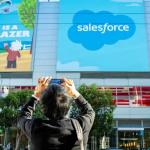There was an image that went viral on LinkedIn, back in 2020 when lockdowns were underway worldwide.
It consisted of one question: “who led the digital transformation of your company?” The three options presented were: CEO, CTO, and COVID-19. COVID-19 was circled in red.
That image was a nod towards the acceleration of digital transformation for businesses during the COVID-19 pandemic. If there ever was a compelling event for companies to take the leap to go digital, this was it. Think about how, in a short time, remote working, virtual events, ecommerce, and more became “the new normal”.
Going digital is challenging. But it’s more challenging to digitally transform. That’s because true digital transformation changes how the business operates at a fundamental level. Naturally, this can be unnerving.
Done right, digital transformation enables businesses to adapt fast to change. Businesses can spot shifts in customer expectations, and meet those expectations proactively and promptly. Businesses can also support and connect remote teams with digital platforms, so that employees can serve customers well even during crises.
Here’s what we’ve learned from two Trailblazers in Asia that accelerated digital transformation during the pandemic and reimagined brand experiences for customers and employees:
Building agility and adaptability
In times of crisis, customers want certainty. For example, they look to brands for consistent messaging across all channels.
Integrating customer touchpoints helps to provide this consistency. In fact, an IDC/Salesforce survey found that integrating customer touchpoints was the top priority for crisis response.
But integration is not only useful for crisis response. It enables brands to draw all customer data together to create a single source of truth. Businesses that integrate their CRM systems with core operational systems to provide a single source of truth are better positioned to deliver seamless experiences. Even during times of change.
Luxasia is a renowned brand that does integration well. The business leveraged the Salesforce Customer 360 Platform and Heroku to connect sales and customer data. This enabled Luxasia to access real-time insights and shift to a digital-first business during the pandemic.
This approach is also setting Luxasia up to thrive well into the future. Speaking at a recent Salesforce webinar, Avis Easteal, Regional Head of Consumer (APAC) at Luxasia, explained:
“Putting customer data together in Customer 360 via Heroku gives us great power. We can identify what our consumers want from multiple brands across our portfolio.”
Easteal said that visualising customer data through Tableau CRM helps build personalised automations, such as product recommendations. This enables a proactive response to shifting customer needs.
“The data gives us an insight into the customer’s world. We can pull out customer segments and identify trends. We’re not only selling products, but emotional connections. We need to know what’s working for customers and what’s not, so we can recommend products that make them feel great.”
Empowering teams with digital support
Customers are only one part of the puzzle. Brands need empowered and enabled teams to consistently deliver positive customer experiences.
This can be challenging during a crisis. For instance, the IDC/Salesforce survey revealed that standard employee onboarding and training became more complex at the height of COVID-19.
Cloud software allows companies to connect teams on a work-from-anywhere system with a unified customer view. This enables employees to engage customers across every touchpoint.
Customer engagement is incredibly important to Anantara Vacation Club. When COVID-19 hit, the company’s 40 service agents were working from home on short notice. This happened during Chinese New Year while some agents were visiting family overseas. Subsequent lockdowns meant that agents were split among three countries for an extended period. Fortunately, the organisation already had the digital infrastructure in place to support a rapid shift to remote work.
“Working from home is now normal, but you can only do it if your base and infrastructure is correct,” says Matthijs de Man, Director of Club Services and Innovation at Anantara Vacation Club. “Our people needed to get into a different rhythm, and our existing digital infrastructure meant we could provide the consistency our team needed.”
That digital support enabled a smooth transition to remote work. Customer service agents were still connected to a 360-degree customer view through Salesforce. From a customer perspective, Anantara Vacation Club’s high service standards were not compromised even during the height of the pandemic.
Exceeding customer expectations through diversification
It’s one thing to meet customer expectations. It’s another to exceed them. To achieve this, companies need to anticipate customer expectations and respond at speed.
For many respondents to the IDC/Salesforce survey, that means developing value-added services.
Diversification is an important aspect of this. Exceeding new customer expectations may involve expanding beyond core service or product offerings. It could also mean diversifying into new communication channels to engage more deeply with customers.
As the hospitality industry opens up, Anantara Vacation Club is welcoming their Club Points Owners (Club members) back. To do so, the company has diversified into new communication channels such as WeChat and WhatsApp to improve real-time engagement.
“At this moment, hotels are opening and closing, flights are being changed, and our Club Points Owners need to know what is going on,” says de Man. “Real-time engagement is more important than ever.”
Digital transformation is a journey
Many businesses had to start or accelerate digital transformation during the COVID-19 pandemic. But digital transformation doesn’t end with adopting new technology.
As seen with Luxasia and Anantara Vacation Club, successful digital transformation changes the business fundamentally. It’s about becoming a forward-thinking, adaptable, and customer-centric company.
Digital transformation is a journey. The journeys that endure are the ones that stay focused on the customer, while keeping an eye on the future.
Learn more about how the Salesforce Customer 360 Platform can accelerate your digital transformation journey.


























